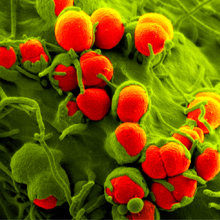Editorial
Issue: Sexually transmitted infections (STIs)
21 May 2013 article

Welcome to the May 2013 issue of Microbiology Today. This issue is primarily focussed on sexually transmitted infections (STIs).
Since the formation of the Royal Commission on Venereal Disease in 1913, the tackling of the ‘hideous scourge’ has been at the forefront of successive generations and remains a significant health focus given that these infections have a cost to the NHS of approximately £165 million each year. As we approach the centenary of the Royal Commission, it is clear that STIs are still a priority, with increasing rates of infection, emerging drug resistance, changing demographics of infection and the need for better provision of specialist clinics and diagnostics. These issues have been identified by the Microbiology Society as a key policy priority and as such an Expert Panel has been established and a statement will be launched later in the year. To mark this, the editorial board and I have put together an issue of Microbiology Today that tries to cover some of the important areas relating to STIs.
Professor Sir Richard Evans gives us a historical perspective on syphilis and how this disease has been a known scourge of mankind for over five centuries, followed by Dr Nicholas Thompson’s article, which brings us up to the modern day, discussing how great advances have been made in Chlamydia biology through the use of high-throughput sequencing techniques. Dr Catherine Ison focuses on one of the priority areas of the SGM Expert Panel, looking at the rise of antimicrobial resistance in gonococci. Finally, Max Bachman discusses new public health regimes for treating HIV in South Africa. With this collection of articles, I think we have tried to give an overall flavour of the issues surrounding STIs and how these can be addressed. The work of the Expert Panel and the position statement from the Society will go a long way to mapping the key issues in sexual health, along with formulation of policy recommendations, and they will highlight the key role microbiology has to play in the prevention, surveillance and treatment of STIs.
The Comment in this issue is provided by Dr Ron Daniels, the chair of the UK Sepsis Trust and Chief Executive of the Global Sepsis Alliance, who provides us with an overview of the importance of sepsis and the barriers to treatment. He also offers us solutions to improve awareness and explains how we must change the systems and the issues surrounding antibiotics in a condition that causes the NHS an estimated £2.5 billion in expenditure.
I hope you enjoy reading this issue of Microbiology Today as much as we enjoyed putting it together.
PAUL A. HOSKISSON, Editor
Email [email protected]
Image: Coloured scanning electron micrograph (SEM) of Neisseria gonorrhoeae on a human epithelial cell - Science Photo Library.
